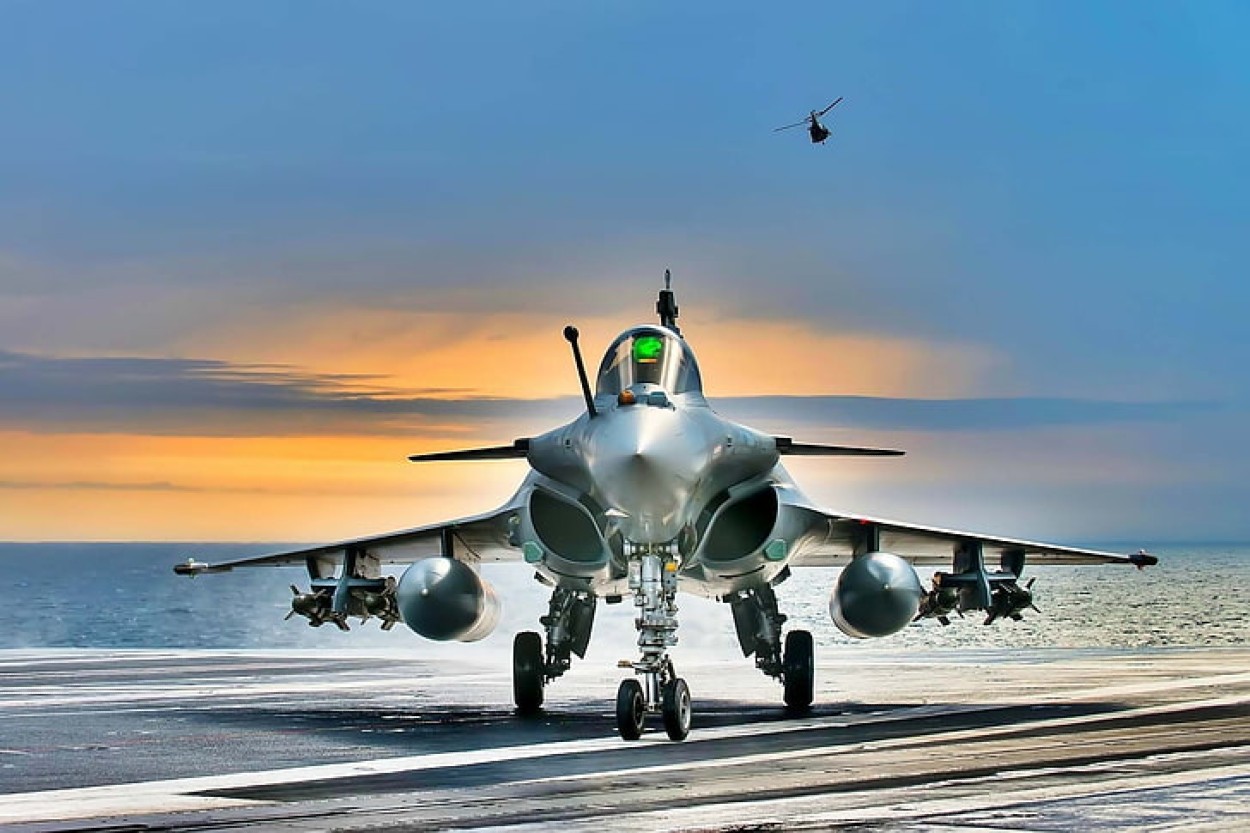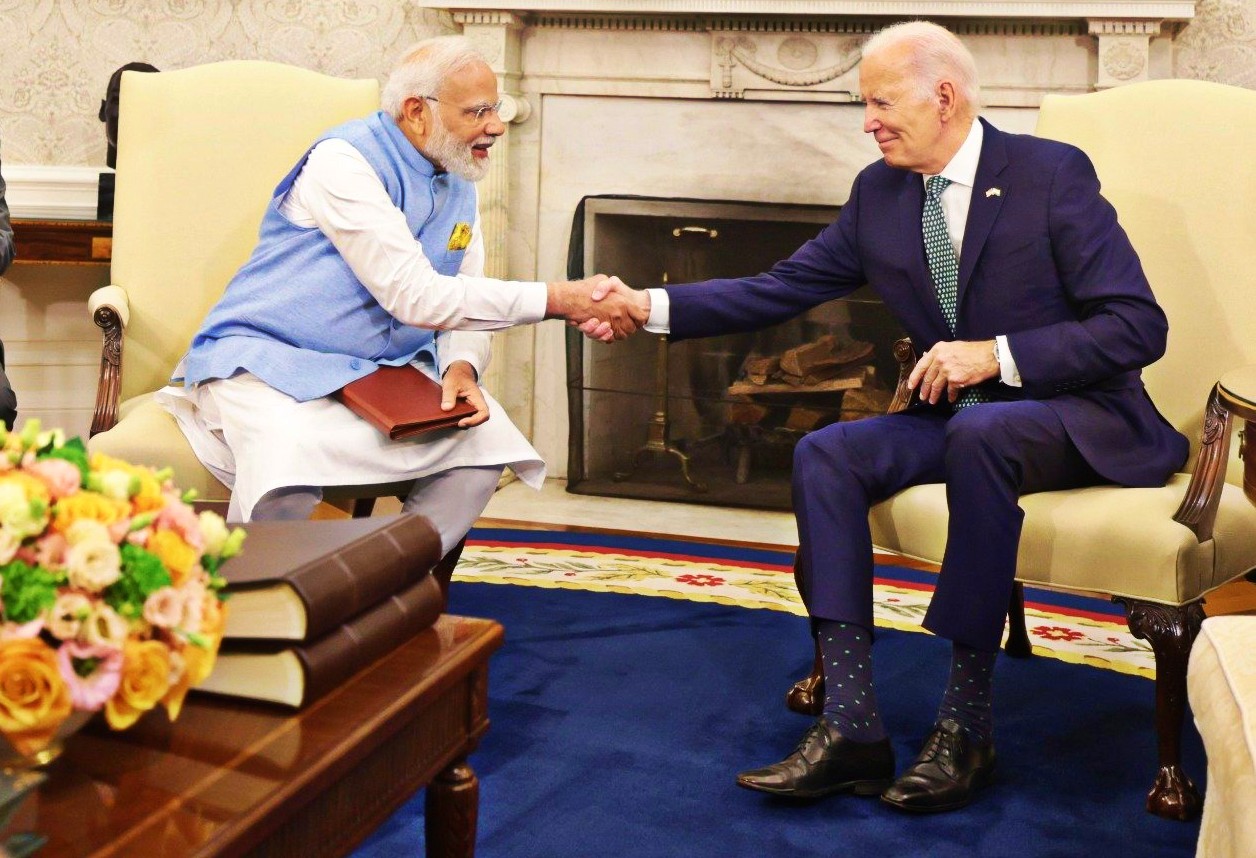The just concluded visit of the Indian Prime Minister to France saw the rare phenomenon of the two countries releasing as many as three official statements on July 14 – Joint Communiqué on the visit of Prime Minister Shri Narendra Modi to France; List of Outcomes: Prime Minister’s visit to France; and Joint Communiqué on the visit of Prime Minister Shri Narendra Modi to France.
Usually, the end of a Head of the Government or State’s visit is marked by the release of one joint statement by two countries. For instance, rated to be highly successful, Modi’s visit to the US was just marked by one statement on June 23.
The exception this time perhaps explains the importance India and France attach to one another strategically, something this writer had pointed out on this platform (France ‘Beats’ US As India’s ‘Most Trusted’ Western Military Partner), explaining how Paris outscores Washington for India as a dependable strategic partner.
However, and this many find surprising, none of the three public statements released on Modi’s visit mentioned the much-anticipated purchase of 26 Rafale Marine Aircraft for India’s indigenous Vikrant carrier.
Instead, considerable space has been given to “Building sovereign defense capabilities together,” such as the joint development of a combat aircraft engine and motorization of heavy-lift helicopters under the Indian Multi-Role Helicopter [IMRH] program with Safran Helicopter Engine, France.
This is all the more surprising given the fact that the day Modi landed in Paris (July 13), the Defence Acquisition Council (DAC), held under the chairmanship of Indian defense minister Rajnath Singh, had granted Acceptance of Necessity (AoN) for procurement of “26 Rafale Marine aircraft along with associated ancillary equipment, weapons, simulator, spares, documentation, crew training and logistic support for the Indian Navy from the French Government based on Inter-Governmental Agreement (IGA)”.
The DAC had also granted the AoN for the procurement of three additional Scorpene submarines under the Buy (Indian) category, which will be constructed by Mazagon Dock Shipbuilders Limited (MDL).
However, none of the three official releases on Modi’s visit mentions either 26 Rafales or three Scorpenes, though the document “Horizon 2047: 25th Anniversary of the India-France Strategic Partnership, Towards A Century of India-France Relations” does mention how “India and France hail the success of the first Scorpene submarine construction program (P75 – Kalvari), a model of Make in India and the sharing of naval expertise between companies in the two countries.
India and France are ready to explore more ambitious projects to develop the Indian submarine fleet and its performance”.
Interestingly, if the first day of Modi’s visit (July 13), the DAC announced its choice of Rafale, and on the second day (July 14), Dassault Aviation released a media statement.
It said, among others, “Following an international competition launched by the Indian authorities, this decision comes after a successful trial campaign held in India, during which the Navy Rafale demonstrated that it fully met the Indian Navy’s operational requirements and was perfectly suited to the specificities of its aircraft carrier. The Indian Navy’s 26 Rafale will eventually join the 36 Rafale already in service, which are giving full satisfaction to the Indian Air Force, making India the first country to make the same military choice as France by operating both versions of the aircraft to help consolidate its superiority in the air and on the seas and guarantee its sovereignty.”
Rafales Go Missing?
What could be the possible reasons for the omission of Rafale in the official statements on Modi’s visit? This writer could gather two points after talking to responsible officials, retired and in service, though these are not convincing, as will be seen later:
First, it was decided earlier that the procurement of Rafale was not an item to be signed during the visit. Apparently, while answering the press on July 12, the day before Modi’s visit to France, Indian Foreign Secretary Vinay Kwatra had underlined that Modi and President Macron would be discussing joint military exercises between the militaries of the two countries; logistic support cooperation between the armed forces of both countries; co-production in the defense sector various areas; cooperation between the navies of both countries to address maritime security challenges in the Indian Ocean region and the larger Indo-Pacific region.

“If you look at the scope of India-France defense cooperation, you will find it to be very robust, strong, and extensive in itself. Naturally, when two leaders meet, they will discuss how to further enhance the scope of this defense cooperation. As I mentioned earlier in my speech, how the objectives of our cooperation could be linked to the priorities of Aatmanirbhar Bharat, that in itself is an important and essential thing. It is natural that when two leaders meet, there will be discussions on how to take the defense cooperation between the two countries in the direction of co-production, code-signing, co-development, and how to align it with the Aatmanirbhar Bharat initiative”, Kwatra had said.
The point here is that the Indian Foreign Secretary had avoided mentioning Rafale in clear-cut terms.
Secondly, before any official declaration on Rafale’s naval versions, the price and other terms of purchase will be negotiated with the French Government after taking into account all relevant aspects, including comparative procurement price of similar aircraft by other countries.
Further, the integration of Indian-designed equipment and establishment of a Maintenance, Repair & Operations (MRO) Hub for various systems will be incorporated into the contract documents after due negotiations.
So a separate agreement will follow later with details, it is said.
The aforesaid reasons are logical and sensible. But how does one explain them if one takes two examples, one very recent and another little older, in comparison?
One, let us take the example of Modi’s visit to the United States last month. One of the most important features of the visit was the agreement on the manufacture of F414 jet engines in India by General Electric (GE).

But then, strictly speaking, the agreement would be operational after the US Congress gives its approval to it. So far, it has got the executive approval. And there has been a Memorandum of Understanding (MOU) that has been signed for this purpose between General Electric and Hindustan Aeronautics Limited (HAL).
That means that the details, including the pricing, are still awaited.
And yet, the India-USA Joint Statement, released on June 23 covering Modi’s visit, said clearly: “Prime Minister Modi and President Biden hailed the landmark signing of a MoU between General Electric and Hindustan Aeronautics Limited for the manufacture of GE F-414 jet engines in India, for the Hindustan Aeronautics Limited Light Combat Aircraft Mk 2. This trailblazing initiative to manufacture F-414 engines in India will enable greater transfer of U.S. jet engine technology than ever before. The leaders committed their governments to working collaboratively and expeditiously to support the advancement of this unprecedented co-production and technology transfer proposal”.
So, what prevented such a mention of Rafales in the Indo-French statements?
Two, it is worth remembering that India decided to buy 36 Rafale fighters for the Indian Air Force through government-to-government means during Modi’s first visit to France as Prime Minister in 2015 when prolonged negotiations between the Dassault and HAL failed over co-production, pricing, and transfer of technology for the originally fixed number of 126.
François Hollande was then the French President.
Let us see what the “India-France Joint Statement during the visit of Prime Minister to France (April 9-11, 2015), released on April 10, 2015,” had said:
“Government of India conveyed to the Government of France that in view of the critical operational necessity for Multirole Combat Aircraft for Indian Air Force, Government of India would like to acquire [36] Rafale jets in fly-away condition as quickly as possible. The two leaders agreed to conclude an Inter-Governmental Agreement for the supply of the aircraft on terms that would be better than conveyed by Dassault Aviation as part of a separate process underway; the delivery would be in time-frame that would be compatible with the operational requirement of IAF; and that the aircraft and associated systems and weapons would be delivered on the same configuration as had been tested and approved by Indian Air Force, and with a longer maintenance responsibility by France”.
It may be highlighted here that details of terms and conditions or pricing of this agreement were worked out later, nearly after one year. But the point is that it was still deemed important to mention this in the official statement of the then-visit.
That being the case, a similar mention of the maritime Rafales could have been officially made during Modi’s latest visit.
- Author and veteran journalist Prakash Nanda is Chairman of the Editorial Board – EurAsian Times and has been commenting on politics, foreign policy, on strategic affairs for nearly three decades. A former National Fellow of the Indian Council for Historical Research and recipient of the Seoul Peace Prize Scholarship, he is also a Distinguished Fellow at the Institute of Peace and Conflict Studies.
- CONTACT: prakash.nanda (at) hotmail.com
- Follow EurAsian Times on Google News




